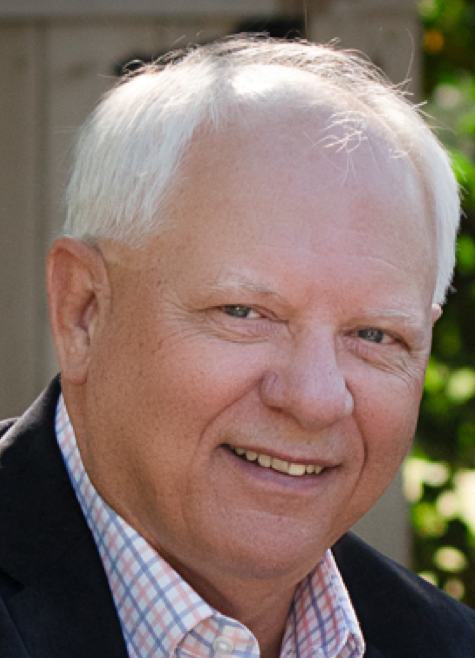 As you know by now, I am slowly climbing back into playing golf after a two-year layoff due to back surgery. The first challenge I have chosen to undertake in my quest to help golf survive is to find out how Millennial’s view golf. Every generation has their nuances, however, the generation called Millennials seems to flow in and out of
As you know by now, I am slowly climbing back into playing golf after a two-year layoff due to back surgery. The first challenge I have chosen to undertake in my quest to help golf survive is to find out how Millennial’s view golf. Every generation has their nuances, however, the generation called Millennials seems to flow in and out of
I found a few articles that explain a lot about how Millennials think and the actions they take. Here are the articles:
Millennials breathing new life into golf-CNBC
I can agree with Aliea Clark, to a point. Millennials are taking a larger role in golf and have pushed golf to make changes. It still is a mystery how millennials play business golf. Hally Leadbetter’s statement is encouraging.
“Golf can open so many doors, so get off the couch, stop scrolling through Instagram, and go hit some balls at your local driving range!”, Hally Leadbetter – Golf Digest
Golf and the Millennial Generation-Golf 20/20
I’ve always felt the NGF must be viewing golf through rose color glasses. Some of their studies on the golf economy are an example.
Anyone who has recently played golf more than once a month can clearly contest NGF’s report on the number of golfers playing golf since they see every time they go to a golf course there are not as many golfers playing golf as the NGF studies report. So, are there that many millennials playing golf?
According to NGF…
“There are about 6.4 million millennials playing golf in the US today. Figure 3 below shows how their numbers stack up compared to other generations of golfers.”

“They (Millennials) make up about 26% of golfers and pump about $1B in equipment purchases and over $4B in playing fees every year through the 90 million rounds they play. Their numbers and impact are profound. But both could be bigger.”
It is not clear how the NGF comes up with the number of golfers and how they define a generation. Viewing golf from the street level…actually traveling around to golf courses and playing golf…they’re obviously not that many golfers on the tee sheets. It is, however, again, encouraging to see NGF report the numbers of golfers could be bigger.
“If the rate of millennial golf participation was similar to gen x participation in the early 1990s, there would be about 10 million millennial golfers today.
“Figure 4 shows how the golf participation rate has dropped from 14% to 9% among 18- to 34-year-olds.”

“That change in participation rate translates to four million fewer golfers, which means the millennials can be held largely responsible for the overall decrease in participation.”
Obviously, there are men and women who fall into the age group defining Millenials, 18 – 34 year olds. The question I have and is one that would better indicate how the economy is really doing is…
- How many Millennials are playing Business Golf?
- How many golfers use golf as a business tool?
Millennials obviously play a part in business golf, but how much?
Golf for millennials: Fast, arcade-style and boozy- Washington Post
The Washington Posts, Alex Schiffer, took a more direct and eye-opening look at how Millennials approach Golf. But first, there is more in the history of golf that needs to be explained which leads up to the Millennials using golf as a party venue.
First of all, there is nothing wrong with being young. We have all been there and every generation does the exact same thing and that is to shun anything, if not everything, their parents and the generations before them did.
Golf in the mid 90’s became popular when a strapping athletic type seventeen-year-old young man named Tiger Woods burst onto the golf scene to become the Junior World Champion. The world of Golf witnessed the arrival of the most exciting thing to happen to golf since the steel shafts were installed on metal clubheads. Golf quickly became “Cool”. Golf was something that the older generation was bored with and the only young people who played golf were country club brats. Kids who did not like playing team sports or had parents who preferred their kids not play combative sports like football gravitated to playing Golf.
Before Tiger, Golf was something that the older generation was bored with and the only young people who played golf were country club brats. Kids, who did not like playing team sports or had parents who preferred their kids not play combative sports like football, gravitated to playing Golf.
Golf was reborn during the Tiger Woods era. The golf economy exploded in every direction drawing in golfers of ALL ages.
Then, in 2008, Golf, and the people who played golf, became a four-letter word. Millions of people who worked in the golf related industries lost their jobs sending, even more, people to the streets all blaming Golf for their unemployment. Now there has been an entire generation born…called the Millennials… who saw golf as, again, a rich kid’s game.
Still, golf survived, but because the powers of Golf refusing to make the changes needed to keep Golf affordable pushed those interested in golf to look for other alternatives to playing golf. First, the golf simulators popped up. These were living room size computer generated golf simulators similar to flight simulators. As the simulator’s popularity wore off the hybrid driving range popped to take its place. Neither of these replacements to Golf could replicate the experience and exhilaration of playing golf on a golf course.
Chad McEvoy, an avid golfer and physical education professor at Northern Illinois University, sees TopGolf having lingering challenges.
“The trick is sort of conversion,” he said. “Let’s just say someone has fun at Topgolf and then goes to play 18 holes for the first time. Will they be turned off by the lack of music and the no-wait staff? That might be a tough obstacle to overcome if you think about the industry trying to convert those people to regular golfers.”
McEvoy looks at the company’s (TopGolf) success as positive.
“Anything the golf industry can do to get people playing golf, even if it’s Topgolf and not an 18-hole round, is great,” he said. “Will that result in more people playing more rounds? I think the jury is still out on that.”
During the several visits I made to three of the TopGolf locations here in Dallas, the millennials in the crowd had very mixed feelings on what exactly TopGolf was offering them. Many only saw it as a place to go to pick up girls or for girls to be picked up. The hitting of golf balls part was just something to do to be seen. They had no interest in playing the game of golf.
Even business golf events earmarked as “Business Networking” affairs are looked at by the millennials as just another “Be Seen” gathering. Millennials looked at the golf part of the game of golf as part of a spectator sports event than an opportunity to learn how to play golf…hit golf balls..or talk about the real game of golf.
The millennials culture of being seen by large numbers of people does not work well with the golf culture of exclusivity.
Still, more questions are asked….
- Will TopGolf replace golf?
- Will Business Golf move to accepting TopGolf as a business tool?
- When will the traditional Golf Courses make the needed changes to bring golfers back to playing Real Golf?
I’ll be back in Part 2 to conclude my thoughts on “Millennials Version of Business Golf”.
Let me know how I can help.




